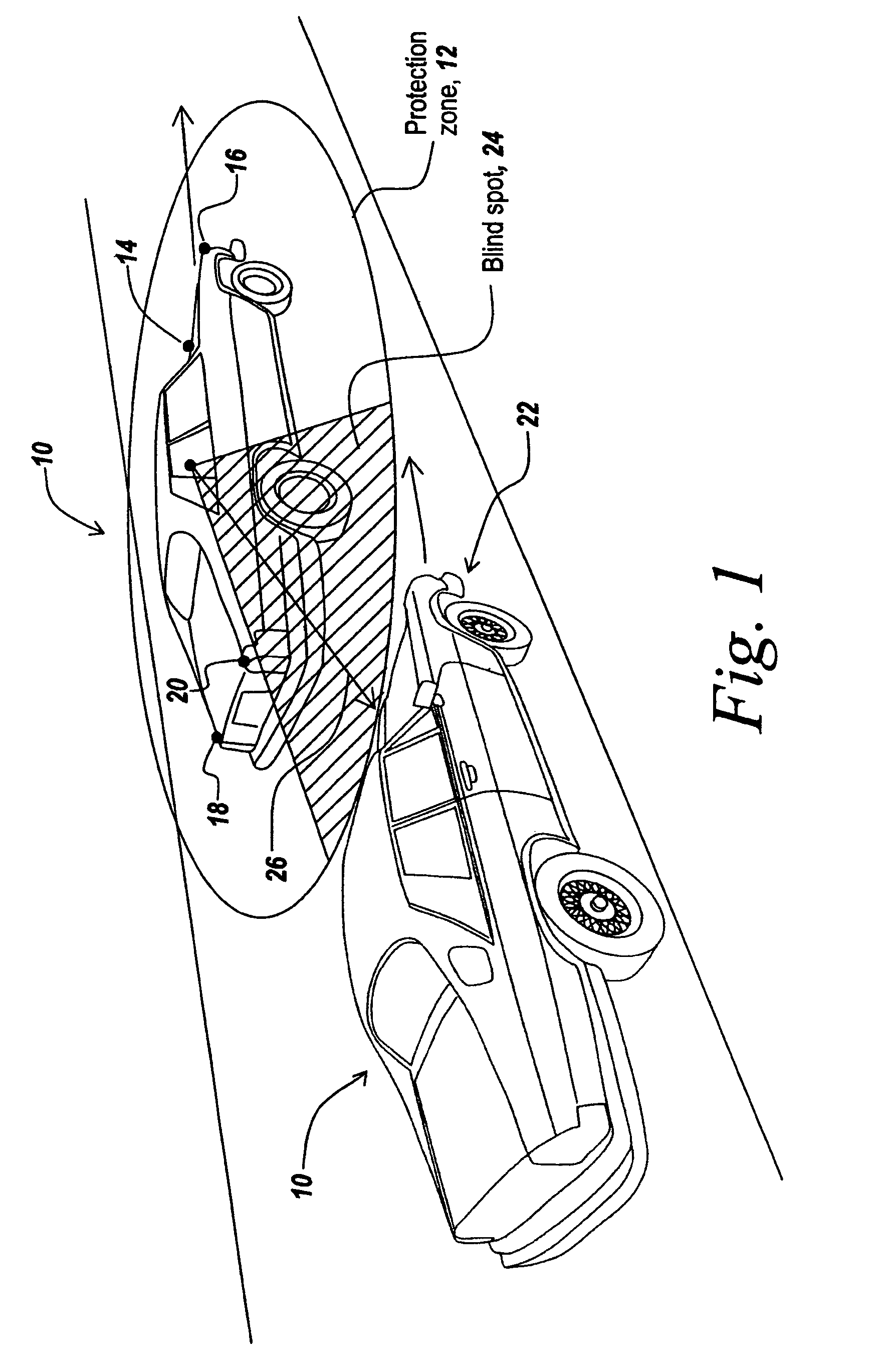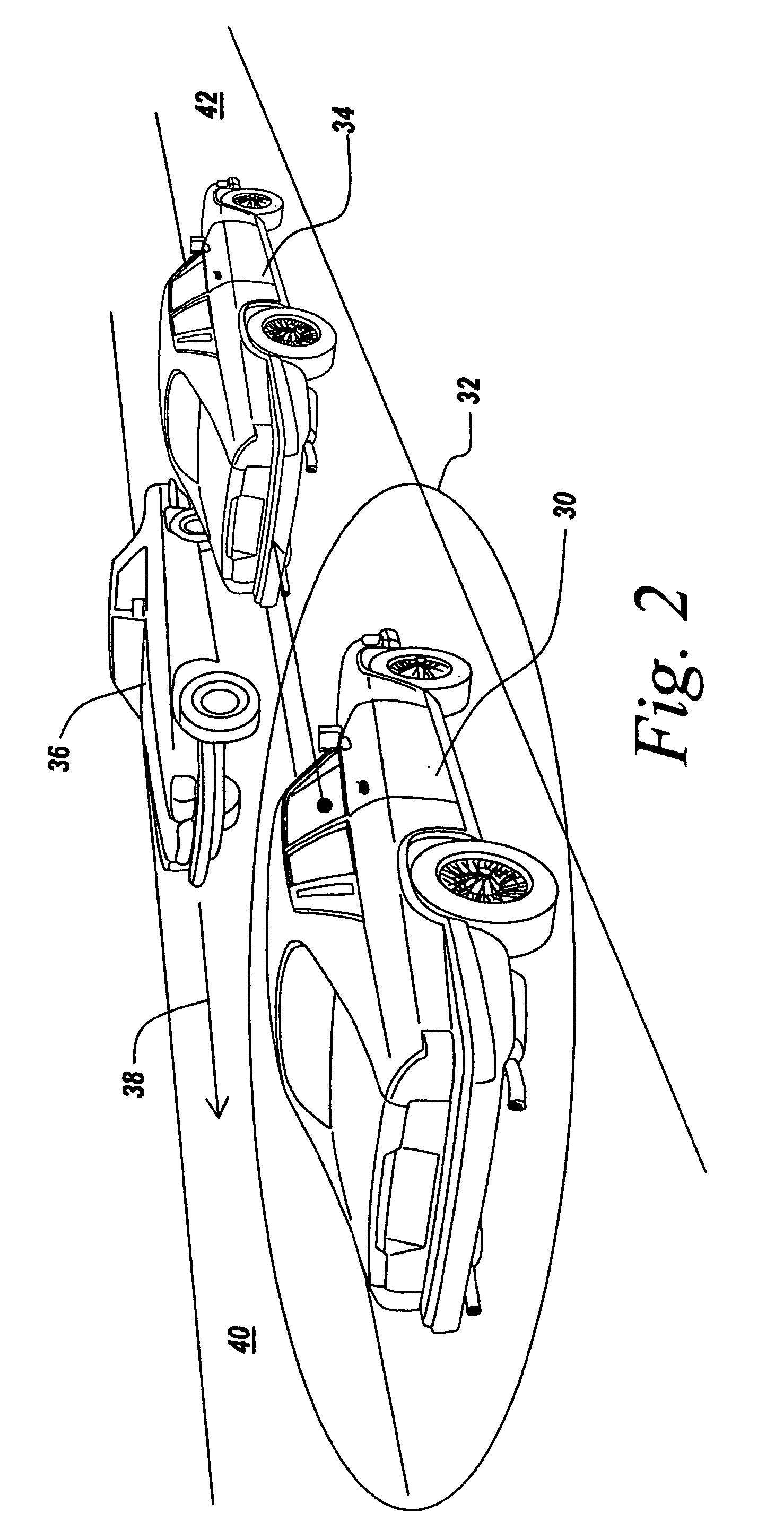Use of E-field sensors for situation awareness/collision avoidance
a technology of situation awareness and collision avoidance, applied in the field of providing a protection zone, can solve the problem that their presence, at least for military purposes, cannot be ascertained, and achieve the effect of removing false alarms
- Summary
- Abstract
- Description
- Claims
- Application Information
AI Technical Summary
Benefits of technology
Problems solved by technology
Method used
Image
Examples
Embodiment Construction
[0045]Referring now to FIG. 1, a vehicle 10 has a system that establishes a protection zone 12 about the vehicle through the use of pairs of E-field sensors, here illustrated at 14, 16, 18 and 20 respectively located on the front and rear bumpers of the vehicle.
[0046]As is common during a lane change operation when, for instance, a vehicle in an outer lane wants to proceed to an inner lane, if there is a vehicle 22 in a blind spot 24 in the rear quarter of the viewing of the driver of the vehicle, it is important to be able to alert the driver that there is an impediment to the lane change, meaning that there is a vehicle into which he or she would run if the lane change were executed.
[0047]As will be described hereinafter, pairs of E-field sensors can be located on a vehicle to establish protection zone 12, which in one embodiment extends approximately 15 feet around the vehicle.
[0048]The relative motion of vehicle 22 with respect to vehicle 10 is sensed by the E-field sensors and ...
PUM
 Login to View More
Login to View More Abstract
Description
Claims
Application Information
 Login to View More
Login to View More - R&D
- Intellectual Property
- Life Sciences
- Materials
- Tech Scout
- Unparalleled Data Quality
- Higher Quality Content
- 60% Fewer Hallucinations
Browse by: Latest US Patents, China's latest patents, Technical Efficacy Thesaurus, Application Domain, Technology Topic, Popular Technical Reports.
© 2025 PatSnap. All rights reserved.Legal|Privacy policy|Modern Slavery Act Transparency Statement|Sitemap|About US| Contact US: help@patsnap.com



